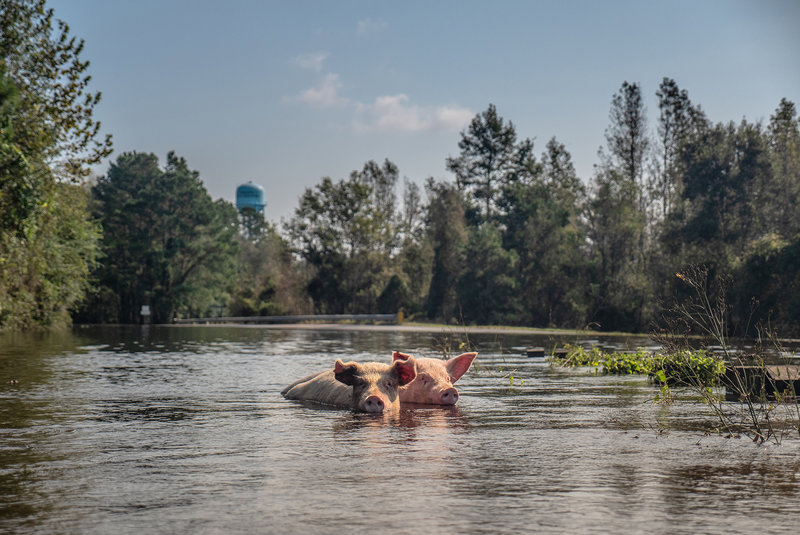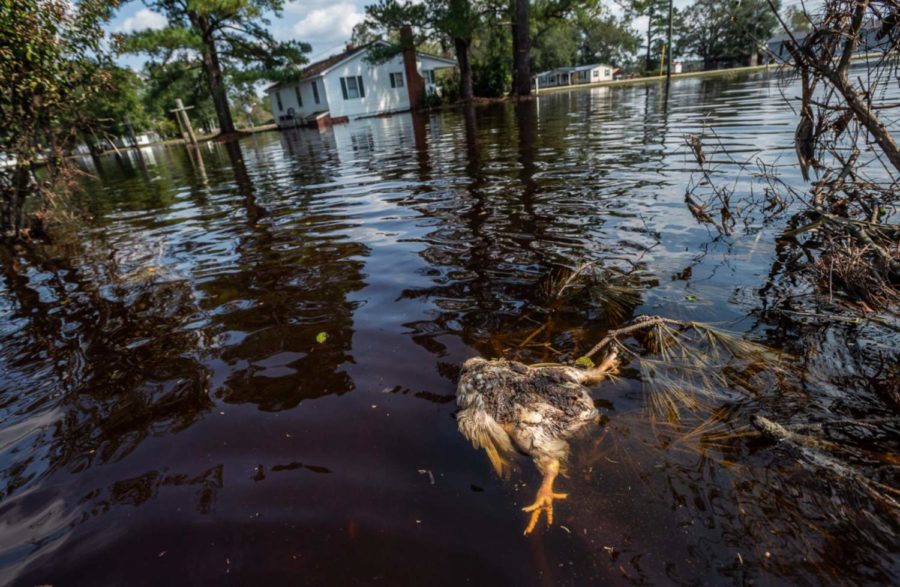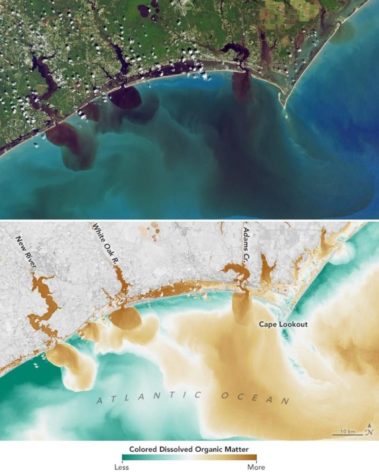
By: Lucy Terry | News Editor
September 28, 2018
Hurricane Florence, the third hurricane of 2018, made landfall on the coast of North Carolina on September 14 as a Category 1 storm, after being downgraded from a Category 4 storm, and while many are feeling immensely lucky that the storm wasn’t as destructive as initially predicted, Florence’s wrath is here to stay. Thanks to early preventive measures, much of the population of North Carolina, South Carolina, and Virginia was evacuated; however, around 43 deaths have been reported so far. As the cleanup begins, Congress has also begun deliberating the request by North and South Carolina for around $1.7 billion in recovery funding. While $1.7 billion may be enough to repair and ease the damage within the area, it’ll take a lot more than that to mitigate the practically irreparable environmental destruction that has occurred.
As in any natural disaster, a large amount of pets were abandoned by their owners and left to fend for themselves. While there are a couple heroic stories of good samaritans saving lost pets, unfortunately some were not amongst the lucky minority. Many domestic animals sadly perished, but it was the massive population of farm animals that took the brunt of the loss; around 3.4 million chickens and 5,500 hogs died as a result of being left behind. Just as most factory farms are vulnerable to issues like infections or antibiotic resistance, they are also defenseless against major natural disasters like this. Many are outraged by this tragic loss of animal life and questioned how it could have ever happened. To the farmers of North Carolina, however, it was the obvious solution— it was more economically feasible to let this fraction of animals die than to spend hundreds of thousands of dollars trying to transport them, only for them to likely die anyways. To these farmers, the lives of the farm animals were more disposable than their profits.

While most of the public is justifiably focused on the devastating death of both domestic and wild animals, there is a bigger, underlying threat at hand. Due to the geography of North Carolina, the rivers and streams easily become flooded with excess rainfall and flood, which is why most of the damage is flood-related. As a result of the inundation of bodies of water and the consequential flooding, organic matter has been streaming out into the ocean. This will lead to the overload of nutrients and deadly eutrophication, causing the destruction of plants, animals, and entire ecosystems. It’s not only organic nutrients that are creating an impact, however. Numerous coal-ash dams from mining processes have begun leaking coal-ash into bodies of water, despite assurances by companies that they’re monitoring the damage and seeing no change. Because of the high amount of hog farms in North Carolina, there is also an equally high amount of hog lagoons, which are basically lagoons full of untreated, toxic waste and greatly dangerous bacteria created by hogs and the farming processes. A reported 7 million gallons of this waste has overflown from 50 hog lagoons; many more of these slurry lakes are still posed to spill over. This is a threat to all forms of life, and like the runoff of organic nutrients, this produces destruction to hundreds of complex ecosystems. At the same time, human lives are also in danger – flood water is spreading contamination of this bacteria to other water sources and crops, which makes them unusable and hazardous for human consumption.

Senior Macy Smith is one of many shocked by the amount of pollution and runoff produced by Hurricane Florence.
“While some people are not concerned with some environmental issues because they ‘can’t see them,’” the effect of pollution from the Carolina Rivers to the ocean are clearly visible and cannot be ignored,” Smith said. “The images of chemical, hog, and coal waste entering neighborhoods via flooding are not comforting! I believe that these effects will spur the national government and Americans alike to reconsider how we are prepared for such disasters.”
North Carolina is no stranger to this kind of environmental disaster. In 1999, Hurricane Floyd struck the Eastern seaboard and brought about so much destruction, that the World Meteorological Organization actually retired the name ‘Floyd’ from titling hurricanes. There have been major improvements in the regulation of hog farms and ash dams, as seen in the difference between 25 million gallons of hog waste leaked in 1999 compared to the seven million this month. There was also more contamination of water by other sources, such as pesticides. While this change is significant, it is not good enough. There should be practically no hog waste leaked, no contamination by coal-ash, and no widespread eutrophication.
All of this begs the question: has our nation really adapted to changing climate conditions and the wrath that they bring? Many don’t believe so. But it is critical to note that if we haven’t at this point, it is necessary we do so soon.
“We cannot simply stand aside, married to old policy and regulation, and let flooding and other disasters infect our home with our own waste,” Smith said. “The government needs to catalyze efforts for the protection of Americans and our earth since we as a whole need a little bit of a push.”
Sydney Lantz, a senior at SCHS and president of environmental club Team Zissou, agrees.
“I think we can certainly learn from what happened in North Carolina. For one, the massive amounts of flooding only represent a small hint of the effects of global climate change, and these natural disasters will only occur on a greater scale if we continue to ignore the issue,” Lantz said. “As for the eutrophication, it isn’t very hard to prevent cultural eutrophication from occurring. We just need to shift our consumer behavior and make organic fertilizers the norm. Of course, this can only happen if we inform the people of the issue and it’s magnitude.”
This hurricane is an environmental wake-up call for not only the Carolinas but the rest of the world.

Leave a Reply